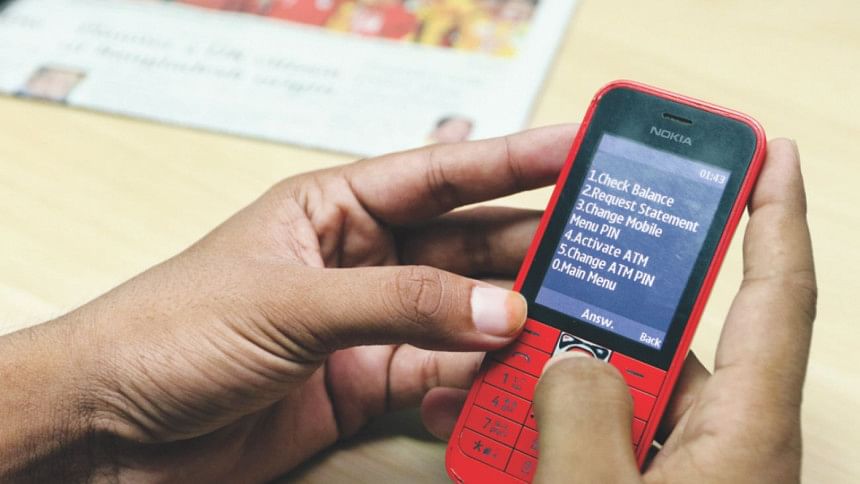A puzzle worth solving

Why is it that the mention of mobile banking creates such a polarising set of reactions among many people? For some, it seems to be the next best thing to sliced bread. Yet, for others, it seems to represent the next big disaster waiting to happen. Let us remember that mobile banking is still really quite a new phenomenon – barely four years old. The fact that something this new can instigate such strong emotions (excitement or fear) at least should warrant a close look.
If we look at the global experience with mobile banking, we see 200+ live deployments around the world across two predominant models: an MNO-led model and a bank-led model. Globally, about 70% of the deployments are MNO-led models, while 30% are bank-led models. Some countries are experimenting with hybrid models too. Sri Lanka allows both MNO-led and bank-led models to co-exist. Earlier this year, India introduced the "payment bank" model where non-bank entities are allowed to operate special purpose mobile banking services. And most recently, Bangladesh has put forward a set of draft regulatory guidelines last month that seems poised to encourage yet another hybrid model. This article takes a closer look at these proposed changes.
The new draft guidelines may have emerged from the best of intentions, but they practical implementation measures and leave a lot of room for clarity and improvement. This was my first reaction in reading the document. Subsequently, over the last few weeks, I spoke to a number of well-recognised industry experts and practitioners, both local and global, and everyone I spoke with echoed my reaction. I was not the only one puzzled. Let me illustrate with three key examples.
First, the new draft guidelines allow no more than 15% ownership by a single entity (bank or non-bank). This means a mobile banking operation needs to have about seven different equity partners. Even if you leave out the coordination costs associated with this proposal, getting seven organisations, some of whom will be direct competitors in their traditional businesses, to agree on things will not only be difficult, but it will be an ineffective governance structure. Moreover, with limited equal shares, the incentive for one organisation to take the lead on anything will be almost nonexistent. This has the risk of running an operation only half-heartedly.
Second, the new draft guidelines indicate that this multi-player approach is intended for encouraging interoperability in mobile banking. This is truly confusing. While it is true that interoperability would help the mobile banking ecosystem to grow further, restructuring the ownership structure to do so is befuddling. We have interoperability in the banking sector today – if you write a check from one bank and deposit it into another bank, the cheque clears within 24 hours. We have a national payment switch for this. We also have interoperability in the telecom sector today – you can call your sister with a Robi number from your GP number. That connection is made in seconds. Do you really need to change the ownership structure to ensure interoperability? This would be like asking a bank to own shares in all other banks so that their cheques are cleared by others, or asking an MNO to own shares in all other MNOs so that people can place calls across networks. How silly would that be? A much simpler and far more efficient way to ensure interoperability in the mobile banking sector would be to have them connected to the national payment switch.
Third, the new draft guidelines state that acceptance of an MNO as equity partner is conditional on its extending reliable telecom access to all mobile banking platforms at the same effective standard of access and pricing. The first part of this is good. But expecting a firm to offer the same pricing to its competitors as it offers an organisation it partially owns, is counterintuitive to the principles of competitiveness. If your organisation owns shares of a firm, it is only natural that you would take steps to maximise its return on investment. Pricing, one of the three "Ps" in business nomenclature, is often a critical component of a differentiation strategy. Banks, MNOs, airlines, and practically all sectors are allowed to set their own pricing. Why would we treat this differently for mobile banking?
There are two sides of a coin. The new draft guidelines certainly have some positive changes too. The risk-proportionate simplified KYC requirement for limited purpose Mobile Accounts is definitely one of those. Another is the opening up of equity stakes to MNOs. Yet another positive change is the further expansion of the categories of transactions allowed through mobile banking.
The mobile banking sector in Bangladesh is truly at a crossroads today. What is clear is that it is not the next best thing to sliced bread (just yet), and nor is it another disaster waiting to happen (just yet). What is also clear is that more of the same is really not going to serve us well in the future. At a holistic level, I view the new draft guidelines as recognition of this reality and a positive step towards finding the right balance between overly prescriptive and too laissez faire approaches. It now requires due consultations with various stakeholder groups to arrive at the best path forward.
The writer is Managing Partner at pi Strategy Consulting, a management consulting firm.

 For all latest news, follow The Daily Star's Google News channel.
For all latest news, follow The Daily Star's Google News channel. 



Comments